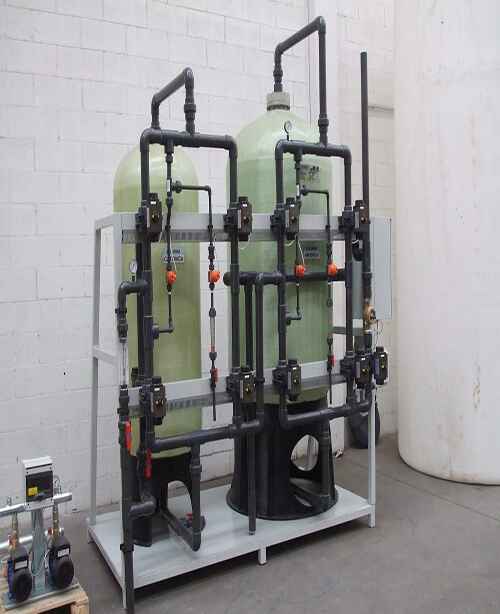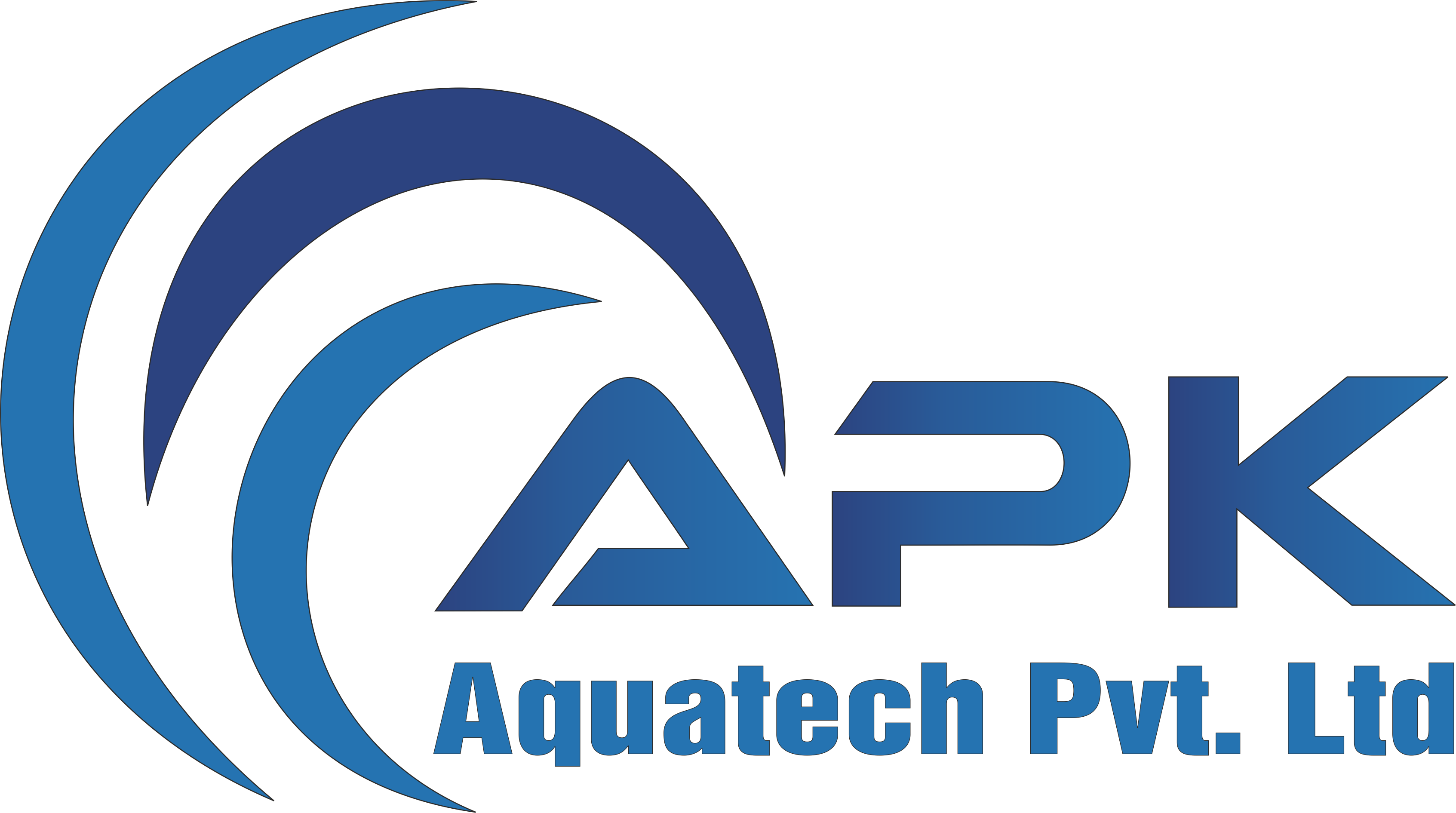BOILER FEED WATER
Pretreatment Equipments
Drinking Water / Mineral Water Plant
Microbiological Treatment Equipments
ENQUIRE NOW
Boiler water treatment is a type of industrial water treatment focused on the removal or chemical modification of substances potentially damaging to the boiler. APK supplied varying types of treatment to avoid scale, corrosion, or foaming in boiler. External treatment of raw water supplies intended for use within a boiler is focused on the removal of impurities before they reach the boiler. Treating boiler feed water is essential for both high- and low-pressure boilers
APK supplied specific boiler feed water treatment system includes some type of:
- Coagulation & flocculation/chemical precipitation
- Filtration and ultrafiltration
- Ion exchange/softening
- Ion exchange/Demineralisation
- Membrane processes such as reverse osmosis and nanofiltration
- Deaeration/degasification
Depending on the impurities present in your water and depending on the needs of your plant and process, these standard components are usually adequate.
Coagulation & Flocculation /Chemical Precipitation
Pretreatment removes physical, chemical, and biological contaminants like bacteria, viruses, and suspended solids. This procedure begins with a series of mixing reactors, usually one or two, that add particular chemicals to remove any finer particles from the water by combining them into heavier particles that settle out. Coagulation is charge neutralization of finely divided and colloidal impurities in water into masses that can be filtered. In addition, particles have negative electrical charges, which cause them to repel each other and resist adhering together. Coagulation, therefore, involves neutralizing the negative charges and providing a nucleus for the suspended particles to adhere to. Flocculation is the bridging together of coagulated particles. Chemical precipitation is a process in which chemicals react with dissolved minerals in water to form a relatively insoluble reaction product. Precipitation procedures are used to reduce dissolved hardness, alkalinity, and silica.
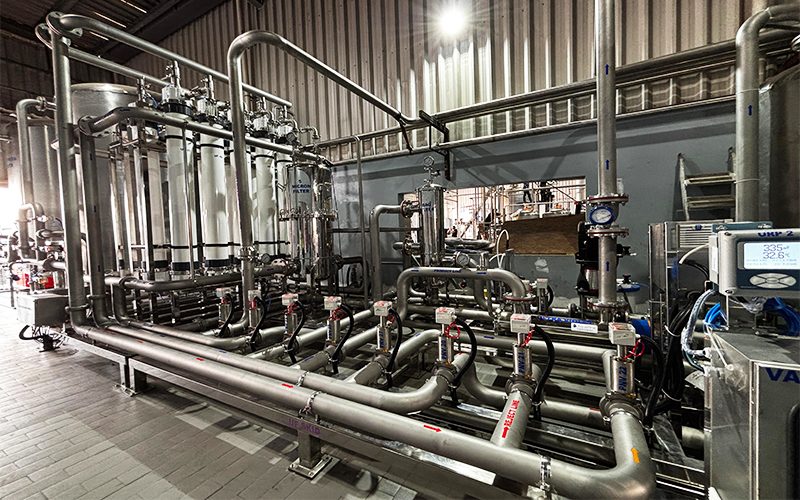
Filtration & Ultrafiltration
In boiler feed water treatment, “filtration” refers to the initial process of removing any suspended particles such as sediment, turbidity, and certain types of organic matter using a filter whereas “ultrafiltration” is a more advanced membrane-based filtration method that removes smaller particles and colloidal matter, with the goal of producing clean water suitable for feeding into a boiler by eliminating potential contaminants that could cause scaling, corrosion, or operational issues within the boiler system.
Ultrafiltration can remove greater than 99% of colloidal silica, as well as precipitated iron and aluminum. The reduction in particulate matter, suspended solids and total organic carbon (TOC) also enhance turbine and boiler efficiency.
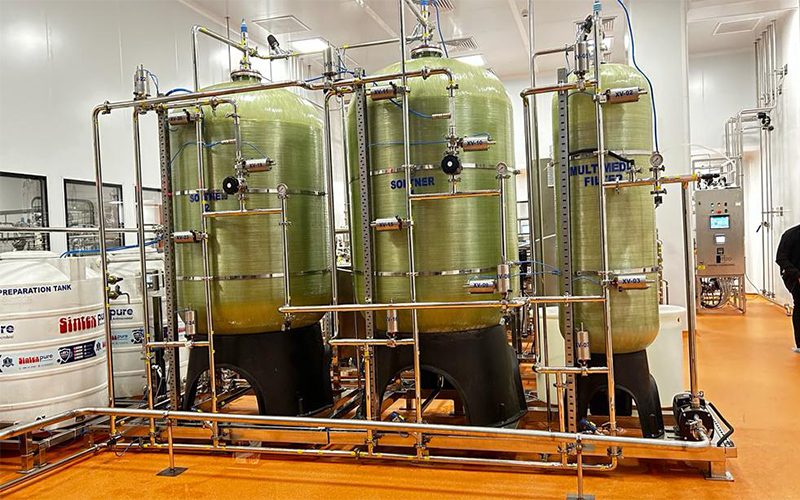
Ion Exchange Softening
A softening resin can be used to pretreat boiler feed water that is high in hardness and complexed with bicarbonates, sulphates, chlorides, or nitrates. Ion exchange resins are two types: cation and anion. Cation exchange resins react only with positively charged ions like Ca+2 and Mg+2. Anion exchange resins react only with the negatively charged ions like bicarbonate (HCO3-) and sulfate (SO4-2). This approach employs a strong acid cation exchange mechanism in which resin is charged with a sodium ion, and as the hardness increases, it has a stronger affinity for calcium, magnesium, and iron, so it grabs those molecules and releases the sodium molecule into the water. In order to prevent scale retention in boilers, steamers, and other equipment used in the food and beverage processing industry, water softening is essential.
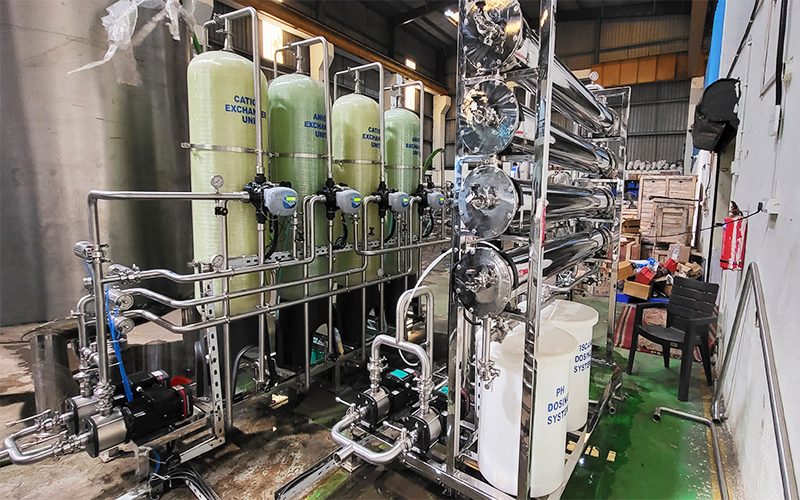
Ion Exchange/Demineralisation
Demineralization is a crucial step in the water treatment process for boiler feed systems. It involves the removal of mineral salts from water to prevent scale formation, corrosion, and other potential issues. By eliminating these impurities, demineralization ensures the supply of high-quality water to boilers, thereby enhancing their efficiency and longevity.
When the water is passed through both cation and anion exchange resins it is known as demineralization. In this process the cation exchange is operated on the hydrogen cycle. That is, hydrogen is substituted for all the cations. The anion exchanger operates on the hydroxide cycle, which replaces hydroxide for all of the anions. The demineralization process can be done by several methods. In the mixed-bed process, the anion and cation exchange resins are intimately mixed in one vessel. Multi-bed arrangements may consist of different combinations of cation exchange beds, weak and strong-based anion exchange beds, and degasifiers
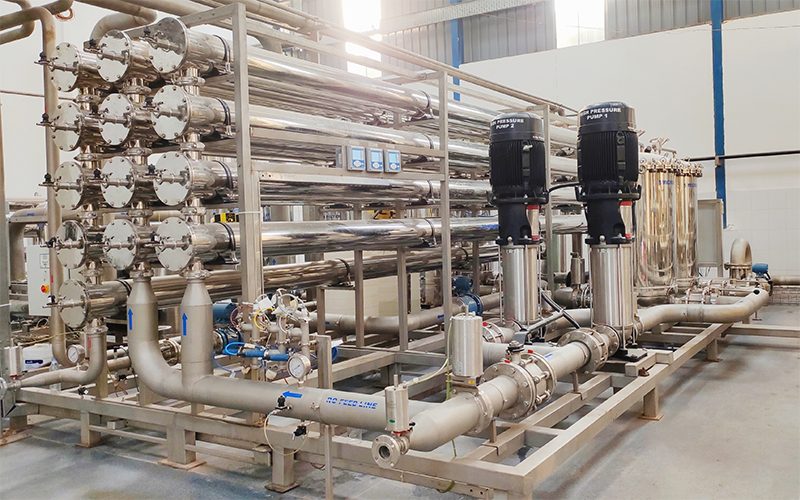
Reverse Osmosis (RO) and Nanofiltration (NF)
In a boiler feed water system, both Reverse Osmosis (RO) and Nanofiltration (NF) are used to remove impurities from the water, but RO is generally considered the preferred choice due to its higher rejection rate of dissolved solids, making it more effective at producing ultra-pure water for critical boiler applications; while NF might be suitable for situations where a slightly lower level of purity is acceptable and preserving some minerals is desired.
Reverse osmosis (RO) and nanofiltration (NF) are often used down the line in the boiler feed water treatment system process so most of the harmful impurities that can foul and clog the RO/NF membranes have been removed. Similar processes of separation, they both force pressurized water through semipermeable membranes, trapping contaminants such as bacteria, salts, organics, silica, and hardness, while allowing concentrated, purified water through. Not always required in boiler feed water treatment, these filtration units are used mostly with high-pressure boilers where concentration of suspended and dissolved solids needs to be extremely low.
Deaeration/Degasification
In a boiler feed water system, “deaeration” and “degasification” essentially mean the same thing the process of removing dissolved gases, particularly oxygen and carbon dioxide, from the water before it enters the boiler, primarily to prevent corrosion within the system by minimizing the presence of these corrosive gases; this is typically achieved using a specialized device called a “deaerator” which heats the water to a high temperature under a vacuum, causing the dissolved gases to release and be vented away.
At this point in the boiler feed water treatment process, any condensate being returned to the system will mix with the treated makeup water and enter the deaeration or degasification process. Any amount of gasses such as oxygen and carbon dioxide can be extremely corrosive to boiler equipment and piping when they attach to them, forming oxides and causing rust. Therefore, removing these gases to acceptable levels (nearly 100%) can be imperative to the service life and safety of the boiler system. There are several types of deaeration devices that come in a range of configurations depending on the manufacturer, but generally, you might use a tray- or spray-type deaerator for degasification or oxygen scavengers.
ION EXCHANGE SYSTEMS
Ion exchange is the reversible exchange of one type of ion present in an insoluble solid with another type of ion with a similar charge present in a surrounding water. Ion exchange is used in chemical purification, substance separation, and water softening or demineralization.
Ion exchange is widely used in the food and beverage industry, hydrometallurgy, metals finishing, chemical, petrochemical, pharmaceutical technology, sugar and sweetener production, ground- and potable-water treatment, nuclear, softening, industrial water treatment, semiconductor, power, and many other industries
Ion exchange in Water Treatment System
Ions are a common source of contamination of water. The more ions dissolved in the water, the higher the total dissolved solids (TDS) and conductivity. Ion exchange is the most effective way to rid water of contaminants.
The most common ion exchange water treatment methods are
Softeners
Softner plant also known as water softening system it’s used to the removal of calcium, magnesium, and certain other metal cations in hard water.
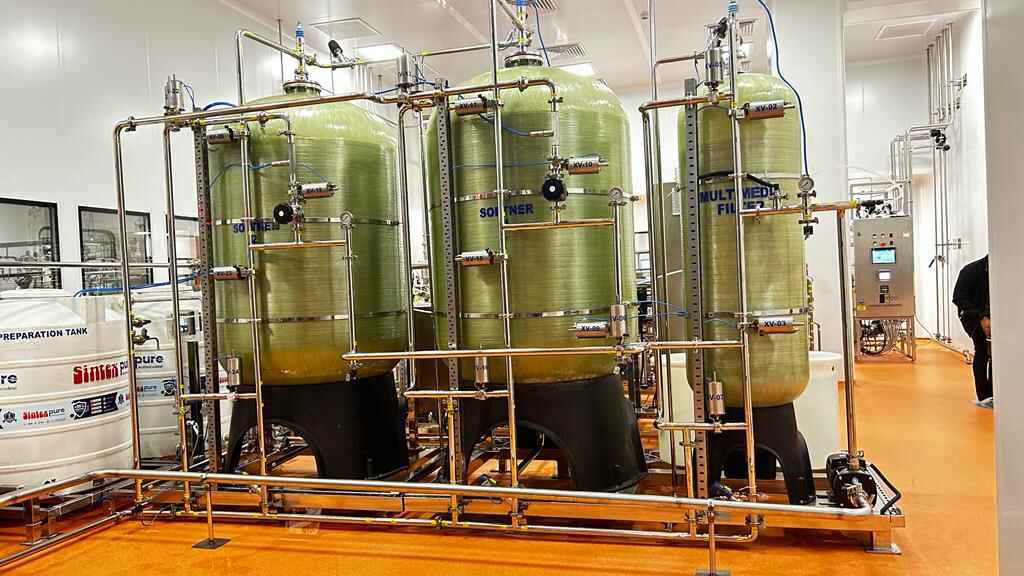
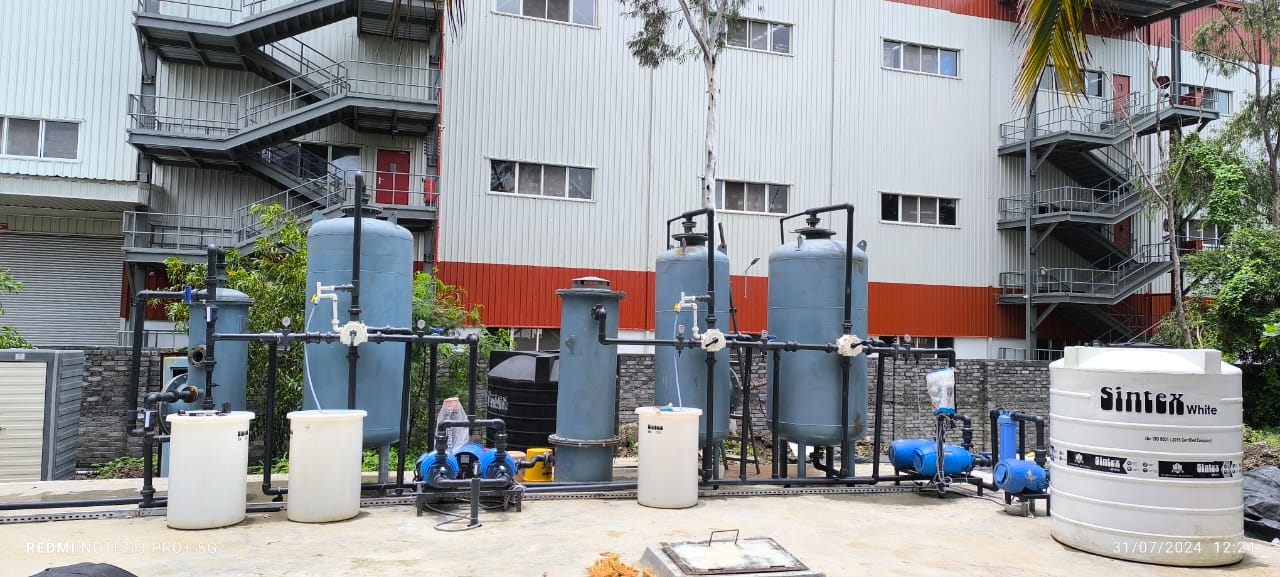
Demineraliser (DM)
A demineraliser is a system that removes dissolved ionic chemicals (salts) from water using an ion exchange chemical process. It is sometimes referred to as a Deionized Water System, a Demineraliser, or a DM Plant
Mixed Bed (MB)
Mixed bed ion exchange is an ion exchange procedure used to polish demineralised water, remove trace dissolved solids.
